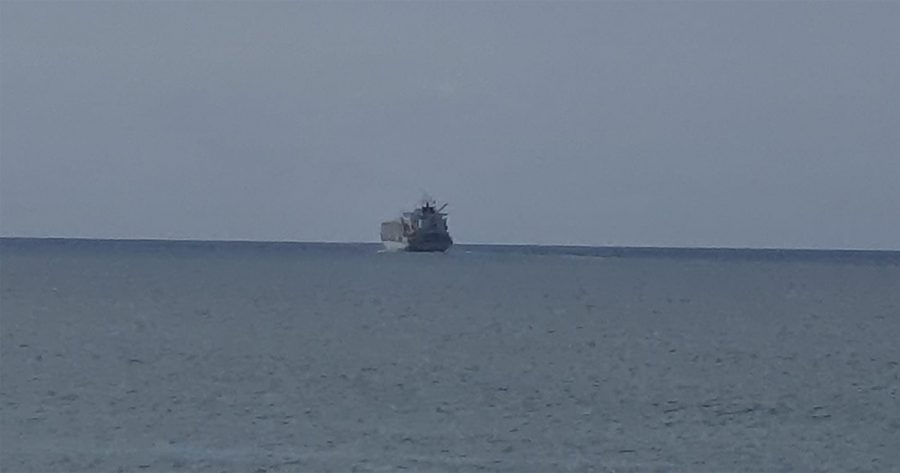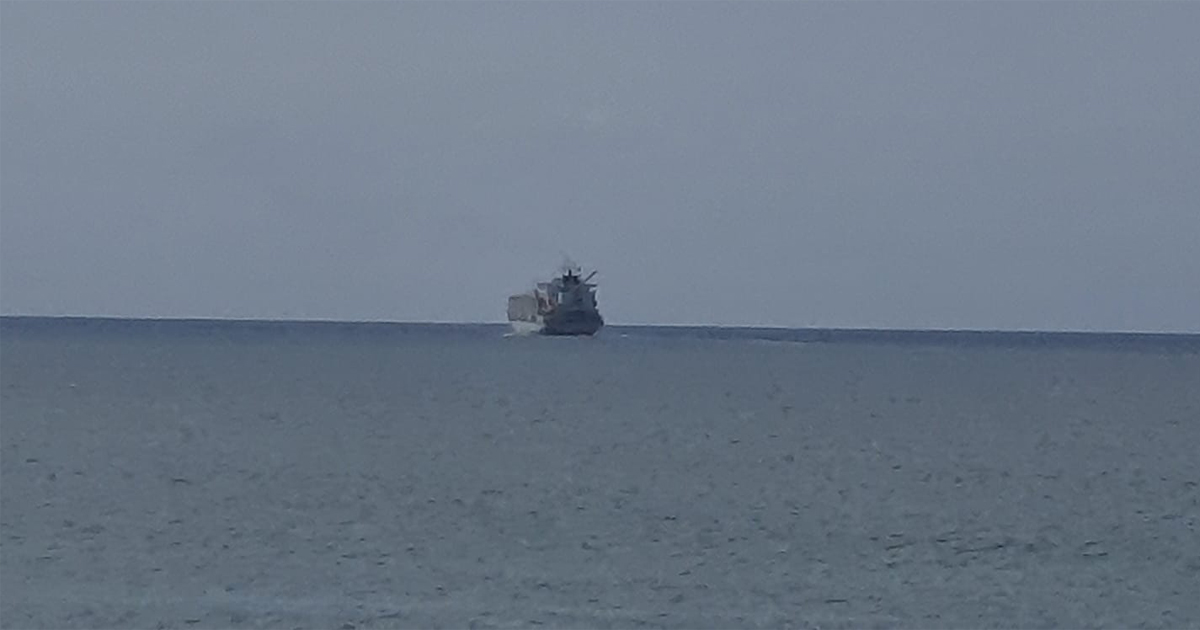
More Revelations as South Africa’s Sheep Shipped to ‘Unacceptable’ Slaughter Practices in Middle East
Tragically over 60,000 sheep from South Africa have set sail on a three-week journey to the Middle East. Most will suffer, some may die, along the way in overcrowded conditions that Carte Blanche said could only be described as “cruel and vile, to say the very least”. The sheep are forced to stand in their […]

Tragically over 60,000 sheep from South Africa have set sail on a three-week journey to the Middle East. Most will suffer, some may die, along the way in overcrowded conditions that Carte Blanche said could only be described as “cruel and vile, to say the very least”. The sheep are forced to stand in their own waste with no space to lie down. They are on a destination from East London to death, where they will be slaughtered in Kuwait in “unacceptable” practices, according to the NSPCA (National Council of SPCAs in South Africa).
Despite local outrage and almost 80,000 people signing a petition, created by the NSPCA, and in spite of the awareness created by local and international media, it appears that in the end money has won.
On Friday the NSPCA posted a photo of the ship leaving South Africa’s shores and said:
It is with great sadness that we report the departure of the Al-Shuwaikh vessel loaded with our sheep.
Our inspectors worked tirelessly through a 27 hour shift, intervening when animals were handled inhumanely, and evidence was collected to build our case to ensure that this never happens in South Africa again.
We thank our supporters for their tremendous support and encouragement. We ask for your continued support and trust in our efforts against this horrendous cruelty.
We will issue an official statement soon.
Further Revelations on the Overseas Trade in Live Slaughter Stock
Freek Tomlinson, Chairman of the Livestock Animal Welfare Association (LAWA), shared a report with SAPeople in which more damning revelations are exposed about this controversial trade.
Sheep Suffer on Smart Ships
In 1995 the then Minister of Agriculture, Kraai van Niekerk, on receiving requests for permits to import live sheep for slaughter from Australia to Durban, sent a fact finding mission to Australia.
The investigations apparently revealed that the overseas trade in live slaughter stock had resulted in cruelty to livestock, destruction of the asset due to high mortalities and shipping disasters, unethical livestock welfare practices and unethical business practices.
In 2001, new information that became available about the trade were analysed on behalf of South African livestock welfare organisations, including the Livestock Welfare Coordinating Committee (LWCC), NSPCA’s Farm Animal Unit and Livestock Animal Welfare Association (LAWA), in order for them to understand the trade as well as the issue of suffering of animals in the trade better. It found that very little had changed since 1995.
The present South African Government don’t know about all of those findings.
Import tariffs
“The overseas trade of live slaughter stock by ship is very profitable due to a discrepancy between countries’ import tariffs on meat (40%) and livestock (0%). The discrepancy results in a cruel trade in live animals instead of meat. Governments and the World Trade Organisation (WTO) at the time and since then, have disregarded the import tariff issue. The cruel trade continues to flourish financially because of tariffs. It is driven by greed,” says the report.
“The trade presents an image of beautiful empty ships to impress Governments and the public. However, no images of consignments of sheep on reaching the ports of destination are ever revealed by the trade to Governments of exporting countries and the public.”
Insurance
Profit margins are apparently very high also because of cost advantages in mass transport by ship in addition to the import tariff advantage. Consequently the trade can absorb mortality losses on consignments as high as 20% to 50% and still break even, says Tomlinson. They only insure risks of mortalities higher than that. But such mortalities are enormous disasters. The cost of insurance in the case of the mass transport of animals is by far too advantageous to induce traders to adopt alternative risk management procedures, says the report.
“The humane handling of livestock, to them, is costly in terms of solving problems like slippery floors on the vessels, additional space and facilities on decks, veterinary stock medicines, experts on board, a lower animal density per deck, more feed trough space per animal, additional procedures and labour for the cleaning of feed and water troughs and the handling of stressed, hurt and diseased animals, etc..” says Tomlinson.
“Insurance companies are not interested in these matters either. They simply spread their risk in small portions to reinsurers. In this way no one loses much on a huge disaster. The insurance industry, by its insurance of the trade, actually ensures that millions of animals will suffer unnecessarily.”
Veterinarians on board
The new data could not reveal that the presence of veterinarians on board livestock carrying vessels positively effected the risks of mortality or incidence of disasters. The only function that a veterinarian can execute effectively is the euthanasing of the hundreds (sometimes thousands) sheep dying on board.
The dire circumstances that prevent veterinarians from functioning to potential make their presence on board mostly “window dressing” for the benefit of obtaining import and export permits from governments, says LAWA.
Disasters
Disasters ascribed to fire on board, heat exhaustion, heat stroke and dehydration, inadequate ventilation, ventilation system breakdowns, automatic feeding system breakdowns, engine breakdowns, outbreaks of diseases, ships sinking with animals drowning are proof of the trade’s inadequacies in the matter, says the report. Some disasters are allegedly not even reported to Governments.
“More proof of the trade and authorities’ inadequacies and poor performances are incidences like the rejection of consignments by importing countries, offloading at more than one port and even total depletion of feed supplies on board,” says the report.
Add to this the occurrence of simplistic problems like unacceptably steep loading ramps, poor lighting, slippery floors, intermittent feeding, contaminated feed and water, overcrowding, lack of treatment and resting facilities, etc. then no more proof of indifference is required. Such disregard invites disastrous results, according to LAWA.
Reported statistics
Mortalities and disasters are completely underreported by the trade, claims the report. Some sources exclude mortalities in adaptation pens and vehicle accidents en route to the export harbour. Mortalities after the moment of mooring at the port of arrival are excluded. These are mortalities at offloading and the ‘dead on arrivals’ at holding feedlots and abattoirs. Mortalities and emergency slaughter at feedlots and abattoirs are also excluded. Losses due to carcase* condemnations because of emaciation and disease conditions developed on board ship, the quantities of meat that is cut away because of bruising of livestock in transport as well as the resultant down grading of carcases are also excluded from data and omitted from official reports. It implies that the trade’s statistics on mortality will fool the exporting Governments that the trade reports to. Consequently Governments’ published reports on transport mortalities, based on the trade’s reports, represent only a fraction of total losses that the trade incur and will fool all of the public, according to the report. (*A carcase is the body of a slaughtered animal after the removal of the offal etc.)
“To confound the statistical issue further, international agricultural authorities that would never publish figures on the trade in fruit under the heading of “juice”, do not refrain from publishing statistics about the international trade in live slaughter stock as “meat”. It effectively conceals the full truth. It is clear that published statistics by international authorities and governments effectively mislead the public about the trade,” says Tomlinson.
The report says that “the most disturbing conclusion is that if the concealed mortalities and carcase condemnations are included in the trade’s reported mortality statistics, a 100% disaster record will certainly result. The reason is because of the trade’s profits that are ensured by government import tariffs, insurance and favourable mass transport costs. Only the sheep will suffer. That is a guarantee.
“The consumer demand is for meat and not live animals. All the risks of disaster and suffering by the livestock could be avoided by supplying importing countries’ consumers with properly and humanely slaughtered frozen or chilled vacuum packed meat of the highest standards.”
Supplied by Freek Tomlinson, Livestock Animal Welfare Association
If You Would Like to Help, then Please:
https://www.facebook.com/cheryl.gaw.3/posts/2693338937364670
https://www.facebook.com/NSPCA/photos/a.10152040283604843/10157055562489843/?type=3&theater
Stream the Carte Blanche episode about the sheep if you are overseas (In SA, you can watch Carte Blanche on Sundays on DStv Now)
